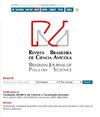研究了水热法制备的Ni/Zn共掺杂氧化锶纳米颗粒增强光催化降解溴酚蓝的效果
IF 1.1
4区 农林科学
Q3 AGRICULTURE, DAIRY & ANIMAL SCIENCE
引用次数: 1
摘要
人类过度暴露于工业废水中的有机污染物要求实施有效的污染物去除技术。研究了镍锌共掺杂氧化锶纳米颗粒光催化降解溴酚蓝染料。水热合成产生了纳米颗粒,随后使用各种分析技术对其进行了表征。紫外/可见光谱在294 nm、306 nm、311 nm和318 nm处发现吸收峰,红外光谱在416 cm-1、588 cm-1和856 cm-1处发现伸展峰。纳米颗粒的直径从30.50 nm到36.97 nm不等。EDX分析证实了其元素组成,Sr和O约占82.02%,Ni和Zn约占3.21%。光催化降解实验表明,SrO纳米颗粒的降解效率为85.42%,而共掺杂SrO纳米颗粒的降解效率为97.97%。这项工作强调了潜在的共掺杂SrO纳米颗粒作为有效去除工业废水中有机污染物的有前途的解决方案,解决环境污染问题。本文章由计算机程序翻译,如有差异,请以英文原文为准。
Investigating the enhanced photocatalytic degradation of bromophenol blue using Ni/Zn co-doped Strontium Oxide nanoparticles synthesized via hydrothermal method
Excessive exposure of human to organic contaminants from industrial effluents calls for the implementation of effective pollutants removal techniques. This article investigates the photocatalytic degradation of bromophenol blue dye using Strontium oxide nanoparticles co-doped with Nickel and Zinc. Hydrothermal synthesis produced the nanoparticles, which were subsequently characterized using various analytical techniques. UV/Visible revealed absorption peaks at 294 nm, 306 nm, 311 nm, and 318 nm, while FTIR spectroscopy identified stretching peaks at 416 cm-1, 588 cm-1, and 856 cm-1 for Ni-O and Sr-O bonds. The nanoparticles displayed diameters ranging from 30.50 nm to 36.97 nm. EDX analysis confirmed the elemental composition, with Sr and O comprising of approximately 82.02 %, and Ni and Zn approximately 3.21%. Photocatalytic degradation experiments demonstrated that SrO nanoparticles 85.42% degradation efficiency, while co-doped SrO nanoparticles achieved an impressive 97.97% degradation efficiency. This work highlights the potential co-doped SrO nanoparticles as a promising solution for the efficient removal of organic pollutants from the industrial wastewater, addressing environment contamination concerns.
求助全文
通过发布文献求助,成功后即可免费获取论文全文。
去求助
来源期刊

Brazilian Journal of Poultry Science
农林科学-奶制品与动物科学
CiteScore
1.80
自引率
9.10%
发文量
60
审稿时长
>12 weeks
期刊介绍:
A Revista Brasileira de Ciência Avícola surgiu em 1999 a partir da necessidade que a comunidade científica possuía de um periódico para veiculação e publicação de seus trabalhos, com a publicação de três números anuais.
A Revista conta hoje com um corpo editorial altamente qualificado e com artigos científicos desenvolvidos pelos maiores especialistas da área, o que a cada dia atrai mais leitores em busca de inovação e respaldo técnico.
Devido à credibilidade que conquistou pelos esforços de sus autores, relatores e revisores, a Revista ganhou caráter de coleção, sendo consultada como fonte segura de estudo desenvolvidos na Avicultura.
A partir de 2003 – volume 5 -, a Revista passou a chamar-se Brazilian Journal of Poultry Science, e todos os trabalhos passaram a ser publicados em inglês. No mesmo ano subiu para quatro o número de revistas por volume, ampliando-se assim os trabalhos publicados anualmente.
 求助内容:
求助内容: 应助结果提醒方式:
应助结果提醒方式:


